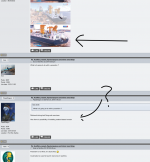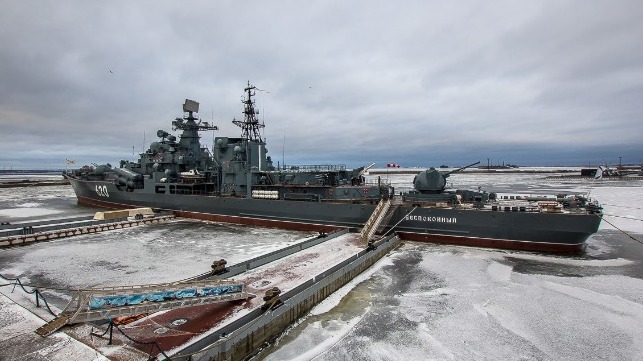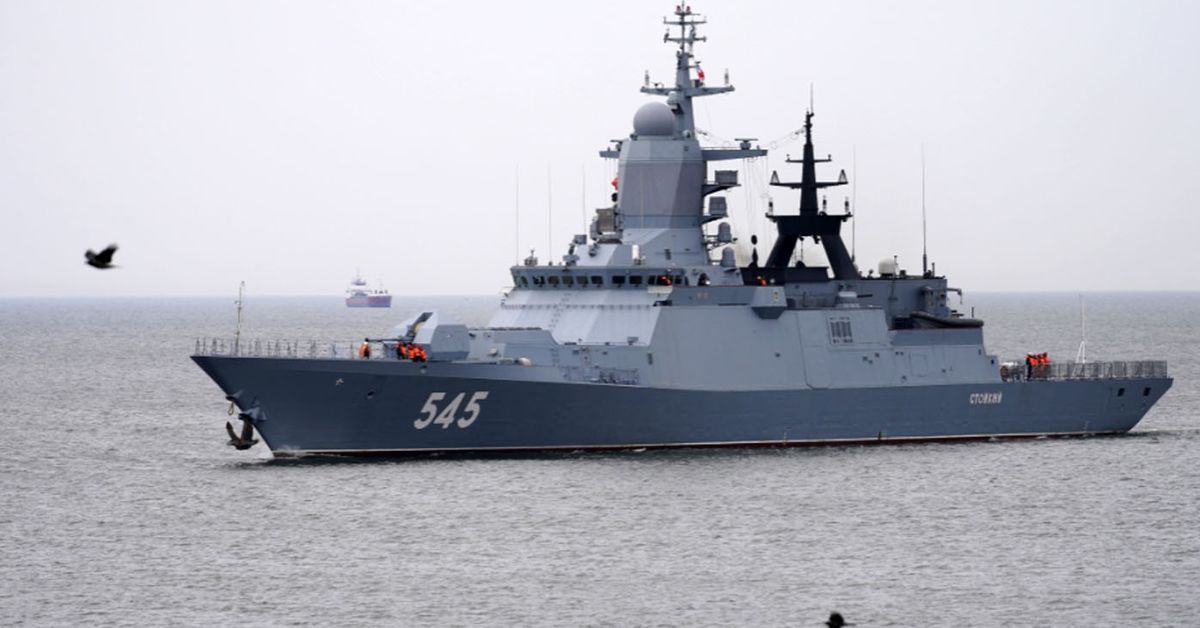With challenges aplenty, Europe’s navies are coming to grips with high-end warfare
The former head of the U.S. Navy said in June testimony that as the service grapples with establishing the right type of force, it must account for the degraded capabilities of its allies, hinting at the once substantial Cold War-era European navies.
“In my mind [there’s] been an over-fixation on the total number of ships as opposed to the nuance numbers of specific types of ships that support viable operational plans,” retired Adm. Gary Roughead, former chief of naval operations, said before the Seapower and Projection Forces Subcommittee of the House Armed Services Committee. “There’s also the need to understand just how small our allied navies have become, and in the past we have always looked to our allies to support us, but those navies are extraordinarily small [emphasis added].”
NATO has for years counted on the U.S. Navy as the centerpiece of its maritime forces, with the individual European navies serving as augmenting and supporting forces. And in the post-Cold War era, Europe’s navies have focused on low-end missions like counterterrorism and counter-piracy [emphasis added].
And that has led to a precipitous decline in naval power available to surge in the event of a high-end conflict. In a 2017 study, the Center for a New American Security found that Europe’s combat power at sea was about half of what it was during the height of the Cold War.
“Atlantic-facing members of NATO now possess far fewer frigates — the premier class of surface vessels designated to conduct [anti-submarine warfare] ASW operations — than they did 20 years ago,” the study found.
Where they collectively had about 100 frigates in 1995, that number hovers at 51 today.
“Similarly, these nations had, in 1995, 145 attack submarines — those dedicated to anti-shipping and anti-submarine warfare missions — but that number has plummeted to a present low of 84,” the study found.
But with the U.S. increasingly focused on Asia and amid tension within the alliance, Europe is coming to grips with the need to grow its forces and regain high-end capabilities it once had — a realization that also grew out of Russia’s 2014 annexation of Crimea from Ukraine [emphasis added].
“Throughout the 1990s, the focus was low-end missions: counter-piracy, counterterrorism, migration, search and rescue,” said Sebastian Bruns, head of the Center for Maritime Strategy and Security in Kiel, Germany. “And they did so with the legacy platforms of the 1980s and 1990s. You know, sending an ASW frigate to fight piracy, well that’s not a lot of bang for your buck.
“But 2014, that’s really the turnaround. I can’t think of any European nation that’s not on board with modernizing and growing their navies. But the long-lead times and having to replace the legacy units, it just takes a damned long time to turn the ship around.”
But an unfortunate side effect of the long-lead times involved in force design — sometimes a decade or more — is that pre-2014 ship designs that are coming into service now are ill-suited for the high-end fight, Bruns said.
The prime example of this mission mismatch is Germany’s 7,200-ton Baden-Württemberg-class frigate. It began entering service in 2019, but is designed for low-end operations.
“They were designed in the 2000s — they even call it a ‘stabilization frigate’ — and they’re coming online at a time where the German Navy needs them for presence, but they don’t have the kind of teeth you’d expect for a 7,000-ton frigate,” Bruns said. “They’re really capable for presence and maritime security operations, but of course that’s not so much the world we live in anymore.”
But new, more advanced frigates are starting to filter into the market. For example, in 2017, France’s Naval Group launched a five-hull intermediate air defense frigate program designed to intercept air threats with the Aster 15 and Aster 30 missiles.
And in January, the German Navy announced it had hired Dutch shipbuilder Damen to build at least four new MKS 180 frigates — a 9,000-ton ship designed to operate in waters with ice formations in a nod to the renewed competition in the Arctic [emphasis added].
Payloads over platforms
It’s not just new frigate designs that show Europe gradually upping its game.
Similar to the track the U.S. Navy has taken in fielding the Naval Strike Missile on its littoral combat ships and the Marine Corps’ approach to fielding it as a shore battery, European navies have begun to upgrade their ships’ systems in preparation for a high-end fight, said Jeremy Stöhs, a naval analyst who authored the book “Decline of European Naval Forces.”
“What we see now is since 2014 the focus is much more on sea control, lines of communication, territorial defense,” Stöhs said. “But because of the long-lead times, it is not just the ships they’re building; it’s the sensor suites, midlife upgrades, focusing again on sea-denial capabilities.”
Countries like the Black Sea and Scandinavian states are investing in anti-ship missiles and shore-based missile systems, he added, whereas a lot of those weapons were disbanded in the 1990s.
In 2016, for example, Sweden announced it was fielding coastal batteries with Saab’s RBS-15 anti-ship missile to defend its Baltic coast for the first time since 2000.
The Franco-British Sea Venom anti-ship missile is being designed to launch from a helicopter such as the U.K.’s Wildcat. It recently passed its first firing trial. The missile is currently designed for small, fast-moving vessels up to Corvette-sized warships.
In the Netherlands, the government announced in 2018 that their De Zeven Provinciën-class frigates would be ditching the venerable Harpoon missile for a new, more advanced surface-to-surface missile by 2024.
Evolving threat, evolving politics
Europe’s evolution toward more high-end naval battles in many ways mirrors the United States’ own pivot away from wars in the Middle East and Asia. But it’s also informed by changing politics.
“I’m seeing European navies pivot back to the basics: How do we handle the GIUK [Greenland, Iceland and the United Kingdom] gap? How do we patrol the North Atlantic? Anti-submarine warfare, convoy escort, anti-surface warfare: They are starting to come back to that,” said Jerry Hendrix, an analyst with Telemus Group and a retired Navy captain. “And as you are starting to see the new heavy German designs, they’re coming back to focusing on a maritime challenger [emphasis added].”
But with this evolution has come a realization of Europe’s shortcomings and just how dependent those navies have been on the U.S. for some core capabilities.
“They’re starting to think about a naval force without the US present,” Hendrix said. “[German Chancellor] Angela Merkel has talked about the need for Europe to start thinking about going its own way. And by the way, I don’t think that’s a bad thing. I do see the interests on the continent and the U.S. going in different directions.”
But a European naval construct without the U.S. would prove challenging, as many countries based their investments on the idea of a shared responsibility, with the U.S. as the main high-end capability provider, said Bryan Clark, a senior fellow at The Hudson Institute.
“NATO, in theory, still has the NATO strategic concept where different countries were going to specialize in different capabilities, which led to the Finns and Swedes really embracing amphibious capabilities for small-scale, special operations forces insertion. The Brits and Italians focused on ASW. But without the U.S. acting as the strategic centerpiece, the strategic concept starts to fall apart.
“The concept assumes you have someone that has a multimission capability that you can augment, as opposed to: ‘We’re going to pull all this together without the U.S. from a bunch of disparate countries with disparate capabilities.' ”
That situation means any NATO action with just European nations would need a lot of participation, he said.
“Before, if you had just the U.S. and three or four nations participating, you’d have a pretty robust, multimission capability” Clark said. “But without the U.S., you’d need half the alliance to contribute so as to not miss out on key mission areas.”
And without the robust U.S. logistics system, countries would have to replace not just the high-end weapons and sensors, but much of the support infrastructure as well. That could mean even more downward pressure on how much capability Europe can bring to bear.
“If you have to expend weapons or do extensive resupply or refueling, the whole model starts to break down,” Clark added. “The way the European navies are structured, they don’t have this end-to-end capability to deliver on all the support missions as well.
“So if they have to invest in a significant combat logistics force, with budgets for defense being limited, that’s going to mean their navies will potentially become even smaller.”
https://www.defensenews.com/smr/transatlantic-partnerships/2020/06/22/with-challenges-aplenty-europes-navies-are-coming-to-grips-with-high-end-warfare/






